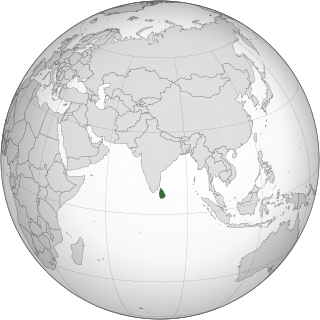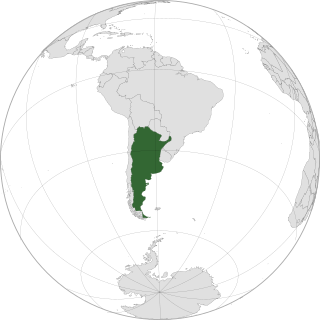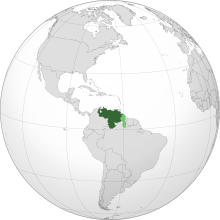
Squatting is the action of occupying an abandoned or unoccupied area of land or a building, usually residential that the squatter does not own, rent or otherwise have lawful permission to use. The United Nations estimated in 2003 that there were one billion slum residents and squatters globally. Squatting occurs worldwide and tends to occur when people find empty buildings or land to occupy for housing. It has a long history, broken down by country below.

A shanty town, squatter area,squatter settlement, or squatter camp is a settlement of improvised buildings known as shanties or shacks, typically made of materials such as mud and wood, or from cheap building materials such as corrugated tin sheets. A typical shanty town is squatted and in the beginning lacks adequate infrastructure, including proper sanitation, safe water supply, electricity and street drainage. Over time, shanty towns can develop their infrastructure and even change into middle class neighbourhoods. They can be small informal settlements or they can house millions of people.

Centro Financiero Confinanzas, also known as Torre de David, is an unfinished abandoned skyscraper in Caracas, the capital of Venezuela. It is the third highest skyscraper in the country after the twin towers of Parque Central Complex. The construction of the tower began in 1990 but was halted in 1994 due to the Venezuelan banking crisis. As of 2024, the building remains incomplete. It was damaged due to two earthquakes on 21 and 22 August 2018.

Rooftop slum or penthouse slum generally refers to illegal housing on the rooftops of apartment buildings. In Hong Kong, some people are unable to afford traditional apartments and are forced to wait years for affordable public housing. They therefore live in squatted shacks on top of buildings. According to the Hong Kong population census, there were 47,091 rooftop dwellers in 2011 and this number is likely to have dropped as working class areas are redeveloped.

23 de Enero is a parish located in the Libertador Bolivarian Municipality west of the city of Caracas, Venezuela. The parish receives its name from the date of the 1958 Venezuelan coup d'état which overthrew dictator Marcos Pérez Jiménez.

El Helicoide is a building in Caracas, Venezuela owned by the Venezuelan government and used as a facility and prison for both regular and political prisoners of the Bolivarian National Intelligence Service (SEBIN). In the shape of a three-sided pyramid, it was originally constructed as a shopping mall, but never completed.
Squatting in Uruguay is the occupation of unused or derelict buildings or land without the permission of the owner. In the nineteenth century, pueblos de ratas developed when gauchos were forced to settle by the rural enclosures for cattle farming. In the early twentieth century, European migrant workers lived in conventillos.

Squatting in Zimbabwe is the settlement of land or buildings without the permission of the owner. Squatting began under colonialism. After Zimbabwe was created in 1980, peasant farmers and squatters disputed the distribution of land. Informal settlements have developed on the periphery of cities such as Chitungwiza and the capital Harare. In 2005, Operation Murambatsvina evicted an estimated 700,000 people.

Squatting in South Korea is the occupation of land or buildings without the permission of the relevant authorities. From the 1950s onwards, shanty towns called P'anjach'on formed around cities, in particular the capital Seoul. As well as providing housing, squatting is used as a tactic by groups opposing gentrification and striking workers.

Squatting in Peru is the occupation of unused or derelict buildings or land without the permission of the owner. From the 1940s onwards, Peru saw the illegal occupations of empty land, which created shanty towns known as barriadas and later pueblos jóvenes. Initially repressed, the Peruvian government eventually decided upon their toleration, and by 1998, it was estimated that 2.5 million inhabitants of Lima lived in such types of settlements. Similar slum tenements existed in the centre, known as solares or tugurios.

Squatting in Ghana is the occupation of unused land or derelict buildings without the permission of the owner. Informal settlements are found in cities such as Kumasi and the capital Accra. Ashaiman, now a town of 100,000 people, was swelled by squatters. In central Accra, next to Agbogbloshie, the Old Fadama settlement houses an estimated 80,000 people and is subject to a controversial discussion about eviction. The residents have been supported by Amnesty International, the Centre on Housing Rights and Evictions and Shack Dwellers International.

Squatting in Guyana is the occupation of unused land or derelict buildings without the permission of the owner. Squatting has been used as a means to find housing by people displaced by conflict in the 1960s and by internal migrants from the 1980s onwards. In 2015, there were estimated to be over 100,000 squatters across the country. The government announced the National Squatter Regularisation Commission (NSRC) and the State Land Resettlement Commission in 2020, in the following year it allied with UN-Habitat to create the Guyana Strategy for Informal Settlements Upgrading and Prevention (GSISUP) which aims to regularize all informal settlements by 2030.

Squatting in Chile is the occupation of unused land or derelict buildings without the permission of the owner. From the 1960s onwards, informal settlements known as callampas were permitted although there were also evictions such as the massacre of Puerto Montt in 1969. In the 1970s, the government of Salvador Allende encouraged occupations, then following the coup d'état, the military junta repressed squatting. Callampas then became known as campamentos.

Squatting in Pakistan is the occupation of unused land or derelict buildings without the permission of the owner. Squatted informal settlements formed following the creation of Pakistan in 1947. They were known first as "bastis" then later "katchi abadis" and the inhabitants were forcibly resettled under military rule. By 2007, there were 7.5 million squatters in Karachi alone. The Sindh Katchi Abadi Authority (SKAA) announced in 2019 that a total of 1,414 katchi abadis had been located and 1,006 of those had been contacted with regards to beginning a regularization process.

Squatting in Sudan is defined as the "acquisition and construction of land, within the city boundaries for the purpose of housing in contradiction to Urban Planning and Land laws and building regulations." These informal settlements arose in Khartoum from the 1920s onwards, swelling in the 1960s. By the 1980s, the government was clearing settlements in Khartoum and regularizing them elsewhere. It was estimated that in 2015 that were 200,000 squatters in Khartoum, 180,000 in Nyala, 60,000 in Kassala, 70,000 in Port Sudan and 170,000 in Wad Madani.

Urban areas in the Philippines such as Metro Manila, Metro Cebu, and Metro Davao have large informal settlements. The Philippine Statistics Authority defines a squatter, or alternatively "informal dwellers", as "One who settles on the land of another without title or right or without the owner's consent whether in urban or rural areas". Squatting is criminalized by the Urban Development and Housing Act of 1992, also known as the Lina Law. There have been various attempts to regularize squatter settlements, such as the Zonal Improvement Program and the Community Mortgage Program. In 2018, the Philippine Statistics Authority estimated that out of the country's population of about 106 million, 4.5 million were homeless.

Squatting in Sri Lanka occurs when people are displaced by war or natural disasters, find it difficult to transfer title or build shanty towns. The Government of Sri Lanka has attempted to regularize squatter settlements. In 2020, there were reported to be over 600,000 squatters on state land.

Squatting in Angola occurs when displaced peoples occupy informal settlements in coastal cities such as the capital Luanda. The Government of Angola has been criticized by human rights groups for forcibly evicting squatters and not resettling them.

Squatting in Mexico has occurred on the periphery of Mexico City from the 19th century onwards. As of 2017, an estimated 25 per cent of Mexico's urban population lived in informal settlements. In Mexico City, there are self-managed social centres. The CORETT program aims to help squatters to register their land plots.

Squatting in Argentina is the occupation of derelict buildings or unused land without the permission of the owner. Shanty towns emerged on the periphery of Buenos Aires from the 1930s onwards and are known as villa miseria. After the 1998–2002 Argentine great depression, 311 worker cooperatives set up across the country as people squatted and re-opened businesses.






















